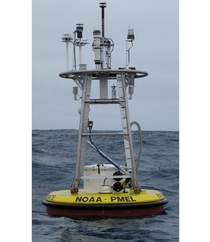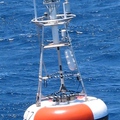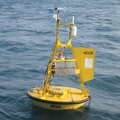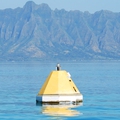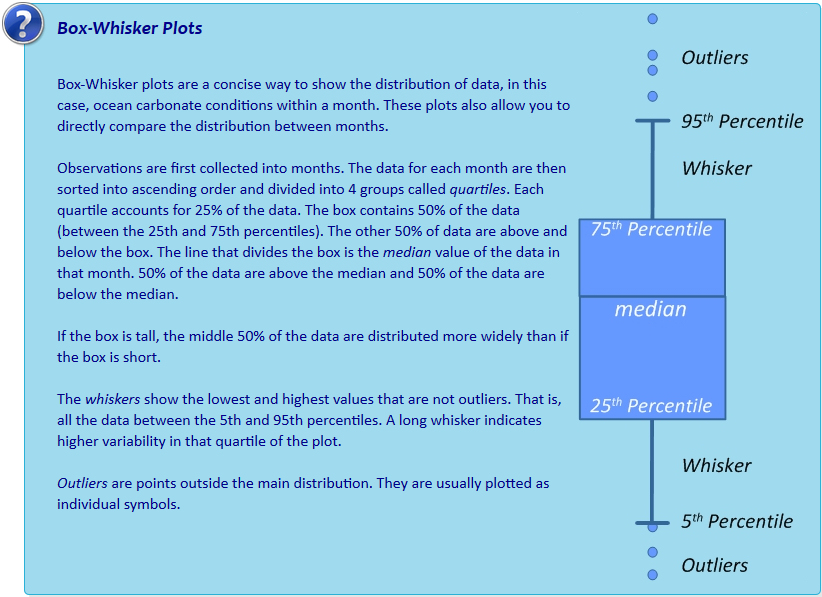Papa
Ocean Station Papa (50.1°N, 144.9°W)
Ocean Station Papa (145°W, 50°N) has one of the longest records of time-series measurements in the ocean. Through support from the US NSF and NOAA and in collaboration with the Canadian DFO Line P Program, a surface mooring was deployed in June 2007 at Ocean Station Papa to monitor ocean-atmosphere interactions, carbon uptake, and ocean acidification. This work is also supported by NOAA's Ocean Observing and Monitoring Program and Ocean Acidification Program. It is an Ocean Climate Station (OCS) mooring that is part of the global network of OceanSITES time series reference sites.
On June 15, 2010, a surface seawater pH sensor was added to the Papa Mooring mooring. By measuring pH in addition to pCO2, we are able to more accurately and precisely study the changes associated with ocean acidification. All seawater pH observations are shown in the second figure below.
For more information about the mooring and meteorological sensors please visit the PMEL Papa Website.
Data availability: archived at NCEI.
Plots of surface water and atmospheric CO2 and surface water pH (click+drag to zoom):
Monthly climatology of surface seawater aragonite saturation state (Ω) and pH:
Interactive box plots below are observations binned by month as described in Sutton et al., 2016. Pie charts represent % of observations within each month that fall below the adjustable line. This adjustable line is meant to provide a tool for assessing potential biological thresholds. For example, setting the line to Ωaragonite of ~2.0 would assess monthly exposure of Pacific oyster larvae to sub-lethal chronic effects in regions where these larvae occur naturally or in hatcheries (see studies here and here).

